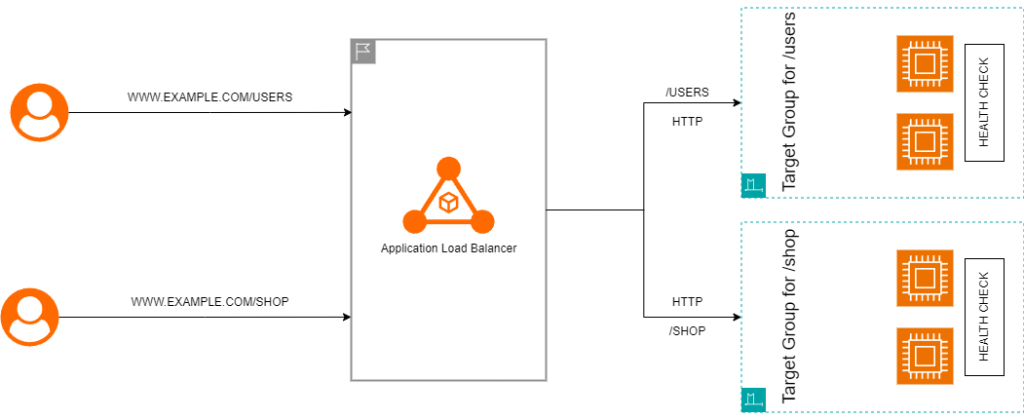Managing and distributing traffic effectively across multiples services is crucial for application performance and reliability. AWS ALB (Application Load Balancer) has been purpose built for handling HTTP and HTTPS traffic at Layer 7, making it a perfect choice for modern web applications and microservices architectures.
Table of Contents
Why ALB (Application Load Balancer)?

ALB operates exclusively at Layer 7 (Application Layer) of the OSI model, focusing on routing and managing HTTP/HTTPS traffic. Its intelligent traffic routing capabilities allow fine-grained control over incoming requests.
Key Features of ALB
- Routing Across Applications on the Same Machine:
- ALB supports container-based deployments, making it possible to route traffic to multiple applications running on the same host machine.
- Support for HTTP/2 and WebSockets:
- With native support for HTTP/2 and WebSockets, ALB ensures efficient communication and reduced latency between clients and servers.
- HTTP to HTTPS Redirection:
- ALB simplifies secure communication by allowing seamless redirection from HTTP to HTTPS.
- Path-Based Routing:
- Specific URL paths, such as
example.com/usersandexample.com/posts, can be directed to different backend servers or services.
- Specific URL paths, such as
- Host-Based Routing:
- Traffic can be routed based on the hostname in the URL. For example,
accounts.example.comandshop.example.comcan point to different target groups.
- Traffic can be routed based on the hostname in the URL. For example,
- Routing Based on Query Strings and Headers:
- ALB can make routing decisions based on query string parameters and HTTP headers, e.g.,
example.com/order?id=456&buy=falsecan be routed to a specific backend service.
- ALB can make routing decisions based on query string parameters and HTTP headers, e.g.,
- Port Mapping for ECS Containers:
- In Amazon ECS (Elastic Container Service), ALB dynamically maps incoming traffic to the appropriate container port, enabling flexible scaling and resource utilization.
Why ALB is Ideal for Modern Architectures
AWS Application Load Balancer is an excellent choice for microservices and container-based deployments, such as Docker and Amazon ECS. Its advanced routing capabilities, dynamic port mapping, and support for modern protocols make it a versatile tool for handling complex application traffic.
ALB Path based Routing example

We can observe that the traffic is forwarded based on URL path i.e /users and /shop. Based on the path the load is distributed to their respected Targetgroup
Conclusion
In conclusion, whether you’re running microservices, APIs, or containerized workloads, ALB simplifies traffic management, improves application resilience, and enhances user experience with its robust set of features. By leveraging ALB effectively, businesses can ensure secure, scalable, and efficient application performance in the cloud. We will be posting a part 2 where we guide a step by step hands on approach to deploy ALB.
